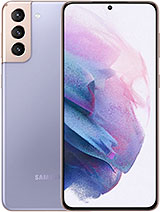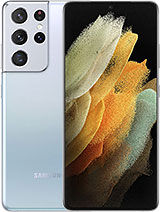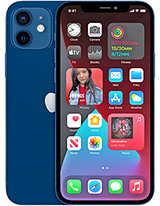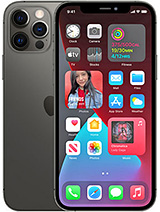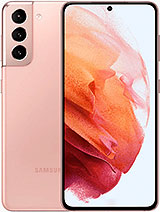Galaxy S21 Ultra vs iPhone 12 Pro Max Camera Test Comparison By Danny Winget
What's up everybody, this is Danny, and today I have a very, very exciting camera comparison between the brand new Samsung Galaxy s21 ultra and the iPhone 12 Pro max. So this is probably the most anticipated camera comparison of 2021 we're gonna, see which camera comes out to be the best. It is sunset right now, so let me know what colors look best. Let me know what microphone sounds best, and I'm going to go out and capture many pictures and photos as I can to see which one comes out to be the best in 2021. Let's do this! This is going to be an extensive one, so grab your popcorn make sure you watch it all the way through, because it's a very interesting comparison. Let's quickly talk about the testing process, all of these shots were taken on auto mode with scene detection enabled on both phones.
Since it's on by default, zero edits were made all the images and video are straight out of the camera. Keep in mind that the galaxy s21 ultra has a pro mode, so you can dial in for that perfect shot. If you have time when the iPhone does not and they both shoot raw for that ultimate flexibility, but today we'll focus on what most average consumers will use, and that is auto mode. Let's start with the daytime photos, just like you would expect. The images are fantastic they're, both sharp, both full of dynamic range in nice colors plenty of detail, but after looking at over 200 images side by side here are some differences that I noticed.
The processing on these two cameras are definitely going to be preference based a lot of the times. The s21 ultra creates the overall brighter picture with more shadow detail. So I think a lot of people are going to prefer this look, the color accuracy bounces around. If you look at the sky, the Samsung is closer to the real color, where the iPhone is creating that dark, contrast blue sky, which doesn't look bad whatsoever, but it's not accurate. If you look at the tree itself, the green is definitely exaggerated on the Samsung, where it's more accurate on the iPhone.
So you can see the dilemma here. Just like I said in my note, 20 ultra comparison with the iPhone. I wish I could get something in the middle of these two, but you really can't complain because smartphones are getting so good now that it's literally hard to compare them on image quality itself during the day. To be honest, we are just nitpicking here, I'm betting, that most of you will not notice a huge amount of difference, but I did notice that smart HDR on the iPhone still picks up some extra details that you can really see the cloud details accentuated on the iPhone and smart HDR in certain times of the day like during sunset here. In this case it shows better dynamic range and overall balance and processing.
Take a look at this building here. The highlights are better controlled. When lighting starts to get mixed, the iPhone seems to pick up extra color depth. You can see more of a dynamic gradient in the sky. I took a ton of pictures in this type of lighting and the same result was happening every time.
I think a lot of people will prefer this look, but it definitely goes back and forth between the iPhone and the Samsung on dynamic range. It all depends on the scenario. Sometimes the iPhone just does a better job overall and sometimes the galaxy s21 ultra pulls ahead. So, while both are really impressive, I found during the day that the iPhone had more instances of better dynamic range. I am going to give Samsung the benefit of the doubt since they like to update their cameras heavily after launch, so I'll make my final decision when I revisit this comparison after some big camera updates, but I'm liking, how Samsung is handling the white balance overall in their processing, even though it leans towards the warmer side, it's more accurate during sunset, especially in Florida.
It's really difficult for mobile phones, but Samsung is doing a better job here. Here's an example of where they both really failed. I had to include this, so you know how difficult the scene was, but I rather have that slight magenta cast with warmth on the s21 ultra versus that super blue cold cast to the entire image, like the iPhone does in these scenarios, regardless of how you feel about color accuracy and preference, I think this comparison is going to heavily rely on flexibility. At this point, the s21 ultra can shoot up to 108 megapixel stills, here's one side by side where the iPhone's final image is 12 megapixels. If you crop in slightly, you can't see a huge difference, but then, when you punch in heavily, you can definitely see a detailed difference.
The zoom difference is also something that's going to make a real difference when it comes to everyday shooting. The galaxy s21 ultra has a 3x optical zoom that matches up to the iPhone's 2.5 x, zoom very nicely, but it also has a second 10x zoom. That is very good. It gives you that second perspective. If you need it, I'm surprised how good the digital zoom is, though, on the iPhone 12 Pro max.
I know that the 10x optical shots look much better, but I expected it to look much worse on the iPhone. So let me know what you think: the galaxy s20 ultra had a pretty terrible minimum focusing distance, so Samsung fixed this year with the focus enhancer. Basically, what this does are seamlessly switches to the ultra-wide to help you get a better and clearer shot. You might lose some depth of field depending on how close you are, but the image is really sharp, and it's not that crappy 2 megapixel depth camera solution, the minimum focusing distance isn't great on the iPhone 12 Pro max, so you'll probably have to use the telephoto for close-ups. This is what it looks like from the same distance.
The iPhone couldn't focus, but that focus enhancer mode on the s21 ultra is fantastic. Food pictures are important, and I think that the iPhone definitely takes a more realistic approach to food, but that enhancement on the Samsung definitely makes the food look tastier. So I guess it's doing its job. Here's a picture taken on auto and besides color and saturation, they look very similar. But then here is a picture taken with the food mode, where you can create an area of focus to get that super depth of field.
Again, you have more options on the s21 ultra portrait mode is next. They both do a fantastic job with edge detection. Both have two focal lengths that you can pick from, but the s21 ultra doesn't seem to be using the 3x optical for portrait mode on non-human subjects. They seem to be pretty equal, no huge major mistakes on the processing, but on human subjects. They both look phenomenal, the s21 ultra with a little extra contrast and saturation here, but I think it looks very good skin accuracy I'm still going to lean towards the iPhone.
But I wouldn't blame you. If you like the Samsung image better, if you like the brighter skin, then you will like the s21 ultra better, but the iPhone when it hits hard. But the image itself is super sharp, so no more skin smoothing if you don't want it on the s21 ultra, even on portrait mode, which I really appreciate. It's nice to have those choices. I do appreciate on selfies how you can choose between a bright and natural tone on the s21 ultra here's a side by side of the two modes.
It's not a huge difference, but you can see the skin brightening is slightly better on natural. The iPhone selfie camera is a little wider, and you can see that here, but the s21 ultra again hitting that white balance better here, so that little of warmth really helps. I definitely don't want to skip over the ultra-wide cameras. The lens that I can't live without. I can get some awesome angles, and it definitely brings creativity into the shot.
The processing is pretty much the same here as the main camera. I don't see a huge difference when it comes to quality during the day on the ultra-wide, both sharp the distortion is there on both, but I really love the ultra-wide. I can't live without it before we jump into low light. Let's talk about the video. The galaxy s21 ultra in terms of pure resolution has an advantage of being able to shoot 8k video at 24 frames per second.
Finally, we get 4k 60 frames per second across all the cameras on the s21 ultra as well matched up to the iPhone 12 Pro max, and they can both shoot. HDR video now there's not a huge difference in quality. Here. Samsung has done a great job in the video department. During the day you can see that there is more shadow detail in this more complex lighting scenario.
It did choose to overexpose that scene to get that detail, but I can see some of you liking this more. The iPhone does capture more detail again, just like the photos in certain lighting conditions. Look at that sky. The cloud pattern is much more detailed. Here is a pan shot of me following these birds.
They both look about the same when it comes to motion, and here, if you look at the rocks, it looks brighter on the iPhone's video, more contrast on the Samsung Galaxy s21 ultra, I did notice shooting a few times that the autofocus hunted slightly. You can see it here. I'm sure they'll fix this in a software update though, so I wouldn't worry about this too much. Here's an example of when Zoom really makes a difference. The 2.5 x to 3x zoom is very comparable. The details are great, but when you kick into that 10x zoom, it's awesome to have this type of range in your pocket.
You can see all the people clearly there. I absolutely love it. When it comes to walking video, they both do a great job. They both have optical image stabilization, but the iPhone 12 Pro max has a new stabilization system, similar to in-body stabilization found on bigger professional mirrorless cameras, and, while the difference isn't huge, the video does look more stable is picking up less of my bounce from the walk. So let me know if you can see a difference when you want to pick up the pace, or you want to film action.
There is super steady mode on the s21 ultra when you enable it, you do drop to 1080p, and it's noticeably softer, but the stabilization is legendary. This running footage looks like an earthquake on the iPhone but super smooth on the s21 ultra. I wish this was in 4k, but this year you do get an option for 1080p 60 frames per second on super steady mode, which is nice for action filming. So, let's get to what you've been waiting for, and that is the low light performance, and I'm happy to say that both of these phones are damn good at night. The improvements on the s21 ultra really make Samsung competitive this year, and you can really see it on the non-night mode.
Shots just snapping on auto is a much better experience. The noise is controlled much better than its previous phones. It's a little softer than the iPhone shots. If you punch in a little to the 12 pro max's shot is sharper without night mode, but I am loving the noise improvements on the Samsung side. In fact, there were more than a few shots where the iPhone was noisier than the s21 ultra shots.
So this is a huge improvement on Samsung's side. So what I did is I took a bunch of shots without night mode and with night mode, so you can see the difference. I took too many of these. So I'll make sure you see more at the end, but you can see that they have a different approach. This is all going to depend on personal preference.
They both do a nice job of brightening, the scene and capturing more sharpness and detail, but the Samsung in a lot of cases, brightens the scene more making. It appears more like daytime, where the iPhone uses more contrast to make the scene look a little more like nighttime, but that does come with a sacrifice, sometimes crushing the shadows too hard, but the s21 ultra in night mode, brightens to the point where noise is still present in the shot. There is a good amount of improvement in noise reduction, but the iPhone 12 Pro max still consistently produces a cleaner shot with less noise, while keeping the image sharp. I think, with a few software updates. The galaxy s21 ultra should have an advantage.
Arguably, the s21 ultra has one of the best night modes out there when it hits with the ultra-wide. It's the most noticeable look at the difference here, both good, but the Samsung is impressive. Look at the shadow detail here and when you look at the rest of the image it's much sharper, this is the most promising low-light performance on a Samsung phone in years, so Samsung. I would love it if you continue to work on the noise reduction on night mode, especially on the main sensor. Some scenarios are worse than others, but that's probably the biggest weakness of night mode right now, but once you guys get this right, it'll probably be one of the best on the market.
The lead is very present when you get into super dark conditions, you can barely see this tree, and it exposed for about the same time on both. I think it was about 10 seconds and look at how clean this is from the s21 ultra and how much more information is there just my personal opinion, just like the daytime shots. I would like to see something in between these two. Furthermore, I like how the iPhone keeps the sky darker. It looks more like a nighttime shot where the s21 ultra is just a little too brightened for my taste, but it wouldn't be a camera comparison.
If things didn't go back and forth, sometimes the iPhone has a brighter shot and the s21 ultra decides to be more contrast, sometimes the ultra likes to overexpose on the non-night mode shot and here on night mode, the iPhone exposed the sky brighter. So there will be some inconsistencies there, but for the most part, I think you guys will be happy with either one. The iPhone is getting better with software updates, too. The sharpness on this flower and the colors really great red color rendition is still one of the toughest things on a smartphone. Samsung has improved over the years, but I think that the iPhone still captures a deeper and more pleasing red night mode definitely helps on the galaxy s21 ultra.
I always use this coca-cola building as a reference and the dynamic range and detail is better on the s21 ultra and while it is over saturated, the iPhone is more consistent with this processing. Here the red almost looks pink on the Samsung, while on the iPhone it's overstated, but I prefer that one so which one do you prefer again? The flexibility shows its usefulness in low light. As well and what's awesome is along with that 3x and 10x zoom night mode also works across all the cameras, so even the zoom shots at night you can get a great 10x shot. The Samsung's looks cleaner and sharper, but I can't believe how good the 10x digital zoom is on the iPhone. It looks horrible when you're shooting it, and you see it on the screen, but after the processing, it's actually really impressive and speaking of that zoom, we do have to talk about the moon shot.
When you go up to 10x zoom, it looks pretty much the same, but the scene, detection and AI on the s21 ultra is incredible. As soon as you hit that 30x the AI assist kicks in and even at 100x. You can get this image. So that's impressive. If you're into this- and I shot this handheld next up- is portrait mode at night Samsung.
Thank you for adding a night mode to portrait mode. I didn't even know about this until I saw a little moon icon pop up when I was testing the cameras. While I still think that the iPhone has more natural skin tones, this makes the comparison super close. I never used the nighttime portrait mode on Samsung phones because it never looked this good. The image is sharp and, like I said, the colors could use some work, but this is a great start.
The night portrait mode also works on the front-facing camera which the iPhone doesn't have. So if you want that background blur at night, the Samsung's photos look so much better because of this mode apple. Please add this into a software update, because the portrait mode looks pretty bad in low light. Here's another example a lot brighter on the night mode portrait selfie, but the Samsung just made my ear disappear, but replaced it with both. In the background, so that's an impressive mistake with regular selfies.
They both look similar with no special modes, but kick in that night mode and the Samsung does produce a brighter picture again. I think I prefer the skin tone with the finished night mode shot on the iPhone, but look at that detail on my face here: zero skin smoothing. You can basically see everything. So very impressive on the Samsung Galaxy s21 ultra. So, let's finish up with nighttime video previous Samsung flagships had pretty terrible low-light video with tons of noise.
So I'm happy to say that this year they have really improved on this, especially in moderate low light. The noise is still there, though it's just not as bad under different exposures. You can really see it. The iPhone 12 Pro max still has the best nighttime video on the market right now it handles the exposure changes very well. The image is sharp and has some of the best noise reduction.
It's very clean for a mobile phone. The darker it gets, though the more noise that's introduced into the s21 ultra's video. This bridge is quite dark, but it looks like the Samsung is trying to brighten the scene too hard introducing more noise. It also looks like this is sacrificing stabilization as well, which I really can't explain. The iPhone is a lot more stable.
They are both being handheld, I'm not sure, what's happening here, so hopefully they can improve this in some future. Software updates here is another example of moderate low light and zooming. In with 3x here is also smooth at night, but if you shoot a lot of nighttime video, I would still choose the iPhone 12 Pro max and, of course I couldn't end this video without showing you the lens reflections. The iPhone definitely has the more prominent reflections, so you'll see more green dots and light reflections in your shots. The s21 ultra has it too, but its nowhere near as visible.
So this year's conclusion is different. I've been comparing smartphone cameras for many years and I can't remember when a comparison has cut this close camera quality is always subjective, and they will always be preference based. But if you take away anything from this video, this is the most exciting most refined and I should dare say the most useful camera system that Samsung has released in a long time. The daytime HDR is great. The hardware gives you a useful 3x zoom, along with the second dedicated 10x zoom, which is more useful than you might imagine, and the quality is excellent.
There are 108 megapixels when you want that extra detail, 8k video. Also, if you want that extra detail, video 12-bit raw, if you're a photographer, stabilize 100x zoom shots, if you want to use it improve night mode portrait night mode, I mean it's a very flexible camera system, maybe the most flexible out there right now, but the iPhone is the iPhone. Its consistent produces great images day and night has the best video on a smartphone. It's always going to be a benchmark for smartphone camera performance, no matter if it's the best camera or not, people are always going to want to know how a camera compares to the latest iPhone. I don't think it's fair to make a judgment on what camera is better right now, because there will be major software updates to the ultra's camera in the next few months.
This is just the way that Samsung does it just know that if you're a Samsung fan, this is the best camera in a long time, and I highly recommend it, but if you want to stick with your iPhone 12 Pro max, that's okay, too, because they both have their strengths and weaknesses, and the iPhone is absolutely no slouch. Let me know which one that you like better in the comments below, I hope you enjoyed this extensive camera comparison hit that thumbs up if you liked it subscribe for a lot more videos like this one, and I will see you in the next one.
Source : Danny Winget

